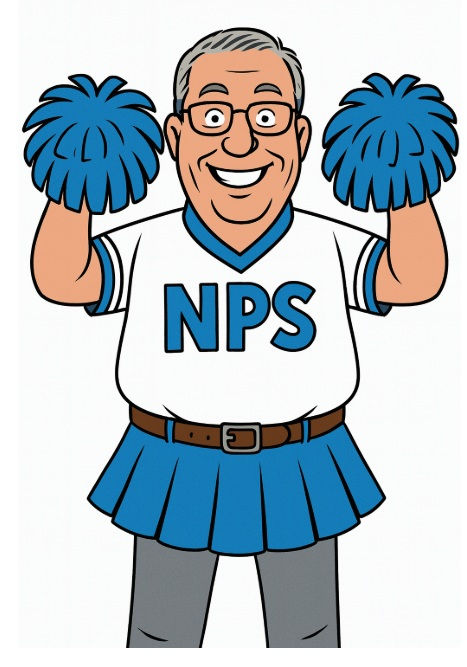So, you want to know what your customers think? (4) – Who will be involved in the process?
- Michael Brandt

- Jun 20, 2020
- 6 min read
Updated: Jul 20, 2022
In the first blog, I mentioned four questions that you should address before starting your VoC program.
1) Is your C-suite or senior management on board with a VoC program?
2) What is it that you want to know exactly?
3) Who is going to be involved in the process?
4) What do you have in mind from a communication perspective?
In the last blog, I looked at what information you were trying to gain from your VoC program. Now let's look at the third question which is: who should be involved in the process?
Executive Sponsorship
If the program is to be successful, it will need C-Suite backing. If the program has C-Suite sponsorship, the results garnered from the program will want to be discussed at that level, giving added urgency and credibility to any improvement measures arising from the customer feedback. It makes sense for one of the senior executives to take on the role of executive sponsor. The executive sponsor takes on the role of liaison between the VoC project manager/project team and the organization's senior management.
When I was at ABB, the program had been initiated by the CEO and it was an Executive Committee member that acted as the project sponsor. Such high-level visibility ensures that the program is given appropriate attention further down the levels of the organization.
Start from the beginning
With the Executive Sponsorship in place, it is now time to look at the process. Given that we are discussing a survey-based VoC program, it would be good to start by looking at the process map. Here below is an example of a swim lane map for an NPS survey.

Who's running the show?
The important question, to begin with, is: who is running the show? Is it one person who is administering the survey or a team? The answer to that will probably depend very much on the size of your organization and its geographical footprint. If it is a global initiative, you will probably need to have representatives in each country to give the main survey administrator local support. You may also need to involve local organizations in order to ensure that translations are in place that will be acceptable to local customers. Badly written text can easily lead to customers being offended (e.g. Japan) and the Spanish used in Spain is not the same as the Spanish used in Latin America. Surveys in Canada will need to be in both English and French in order to comply with local legislation. These are all issues that your local organization will be able to advise you on and will prevent you from starting off on a bad footing with your customers.
Who will determine which customers will be surveyed? Will it be sales managers and/or account managers for example? Or will you do a sweep of your CRM tool to deliver customer data? The latter may be a good solution if you want to ensure some impartiality. However, sales/account managers may be given an opportunity to take a look at the list and strike some customers off the list. There should always be a good justification for doing so. It may not be a good idea, for example, to send a survey to a customer that you are in the process of litigating with. That may just add fuel to the fire! If you are using a CRM tool that you can customize, some will give you the possibility to exclude individual customers from surveys.
Who deals with incoming feedback? Who follows up with customers if there is an issue? There is no point in sending out a survey of nobody is going to read what customers have to say. The question is: who gets to read the feedback first and act upon it?
One thing that you will need to determine is what criteria you put in place for closing the loop. Will all customers be contacted? Or will you concentrate on dissatisfied customers (or detractors in the case of NPS surveys)? In the cases of satisfied customers raising issues, will you follow up with them also (and I highly recommend that you do!)? And then the question: who is responsible for this first follow-up? This will depend very much on your organization and the roles of the various actors. In my last organization, I maintained that sales/account managers were the people who knew their customers best and should also be the ones to follow-up initially with the customer. That is not to say that they were responsible for solving the issue (in many cases they would not have been in a position to do so), however, they were responsible for:
Ensuring that the feedback was recorded correctly and that any necessary information coming to light during the follow-up conversation which was relevant to resolving the issue was also recorded
Ensuring that the feedback was submitted to the unit/team best suited to resolve the issue
Tracking the progress of the resolution and communicating progress at regular intervals to the customer
Initially, these people had been called Issue Originators in a "fire and forget" sense. They would record the issue, submit it to the relevant unit/team, and then wash their hands of it, leaving it to the back-scene staff to resolve the issue and, perhaps, communicate the solution to the customer. We changed that and these people became "Issue Owners" with the above responsibilities. We felt that if anyone should represent the interests of the customers within the organization it was the sales/account management staff. They would also have an interest in communicating with the customers.
Who resolves the issues raised by customer feedback? Here again, that will depend on your organization. Who generally handles customer issues (or complaints)? Do you have a tool in which you can track how these issues are dealt with? Are there already processes in place for this resolution team/unit to contact the front-line or the customer for more information? Can a quick fix be communicated to the customer to alleviate the initial issue before a full root cause analysis has been carried out and a sustainable solution is available for implementation? And who should communicate this? The person carrying out the first follow-up or the resolution team?
As we know, processes are not failproof and sometimes things get jammed. What is the process for escalation in cases like this? What roles do the higher placed managers play? One example I have is that senior managers were given a certain number of customers with whom they had to carry out the initial follow-up. Not only did this allow senior managers to get a first-hand view of the types of issues that customers were raising, but it also gave them the opportunity to demonstrate to important customers that their voice was being heard and was being taken seriously by the organization. The benefits were significant.
Closing the Loop
Many will know the Closing the Loop system published by Bain & Company. Although it was designed for NPS surveys, it can be used for any form of feedback.
The Inner Loop is the immediate loop closing with the customer, with short term resolution of the particular customer issue. The Outer Loop is intended to resolve systemic issues and to ensure products and services are improved in line with customer wants, needs, and expectations. The Huddle is the interface between the two.

In order to read more on the Bain Closed Loop system, I recommend reading the following two articles:
The question we need to address here is: who is involved in this process? A normal complaint handling process might suffice for the Inner Loop, but do you have an organization/process in place for the Outer Loop? One company that I dealt with had a process that involved country councils that were responsible for:
assessing which issues needed to be dealt with at a local level and ensuring that these issues were handled appropriately
assessing which issues needed to be escalated to a higher level (regional or HQ) and they were routed accordingly
The same councils existed at regional and HQ levels and the HQ dealt with issues that had a global reach and required attention from central corporate functions. In a global organization, such issues are not difficult to imagine. The important thing is that these processes need to be in place and the people involved need to understand what their task is. The process has to ensure that no issue falls between the cracks and remains unanswered. Here again an example from my ABB days. The three most important issues, or those that had been given the highest priority, were set up as projects with Executive Committee sponsors. Each month one of the project managers had to report into the Executive Committee with a progress report. This kept these improvement projects in constant view and all those involved, or those whose support was required had an incentive to give their best to achieve the project objectives.
No passing the buck!
When handling customer complaints or negative feedback there is a great temptation to move the issue on as soon as possible (putting it bluntly - get it off my desk). People responsible for certain actions need to know that they cannot delegate this responsibility and they must accept that they are accountable for the completion of the actions with which they have been tasked. The absence of such a rule will result in issues being left unresolved due to “misunderstandings” as to who was responsible. There needs to be absolute clarity as to who is responsible for doing what, and do it they must!
Subscribe to my blog on the main Blog page and be notified of new posts as they happen!




Comments